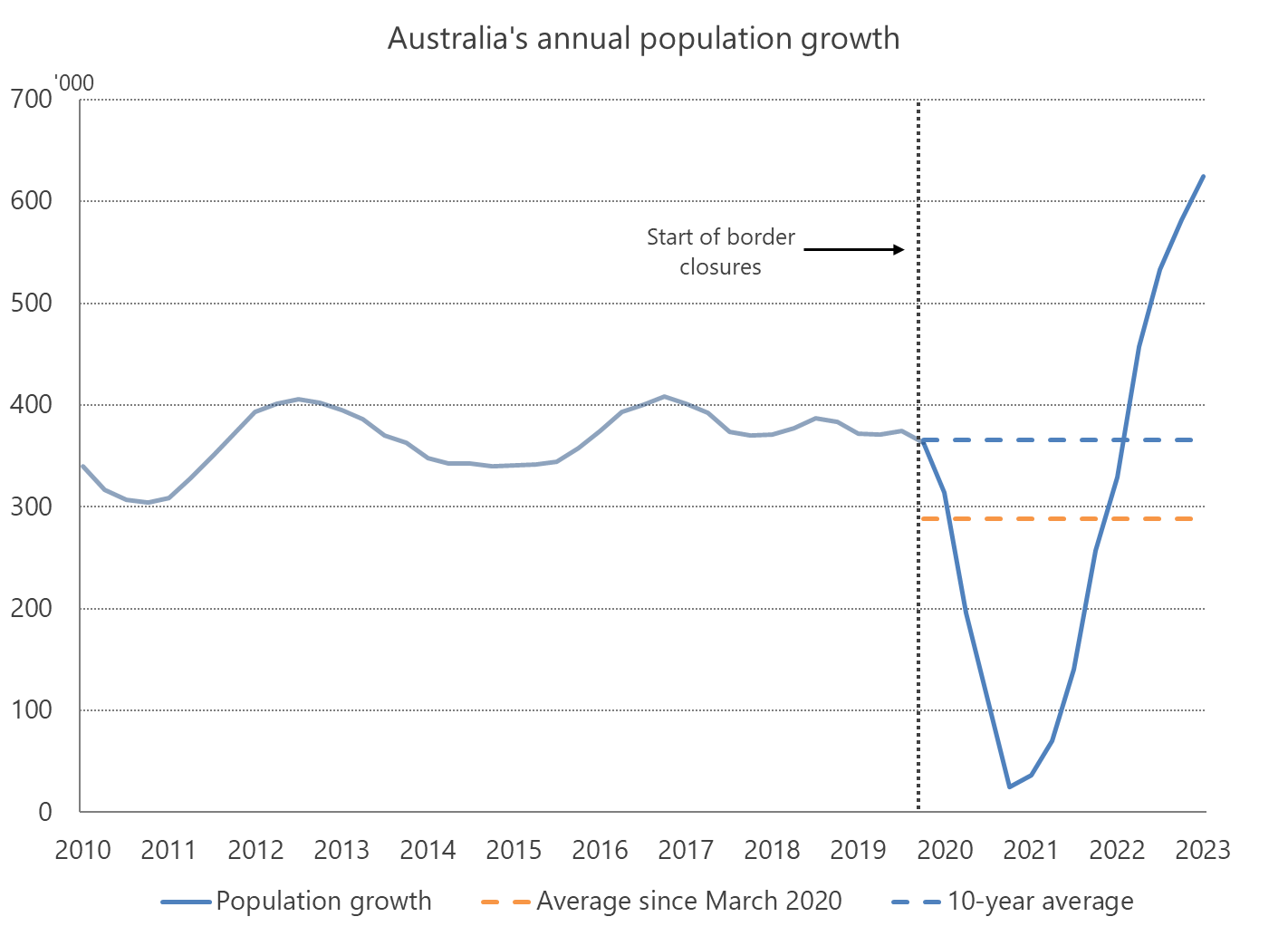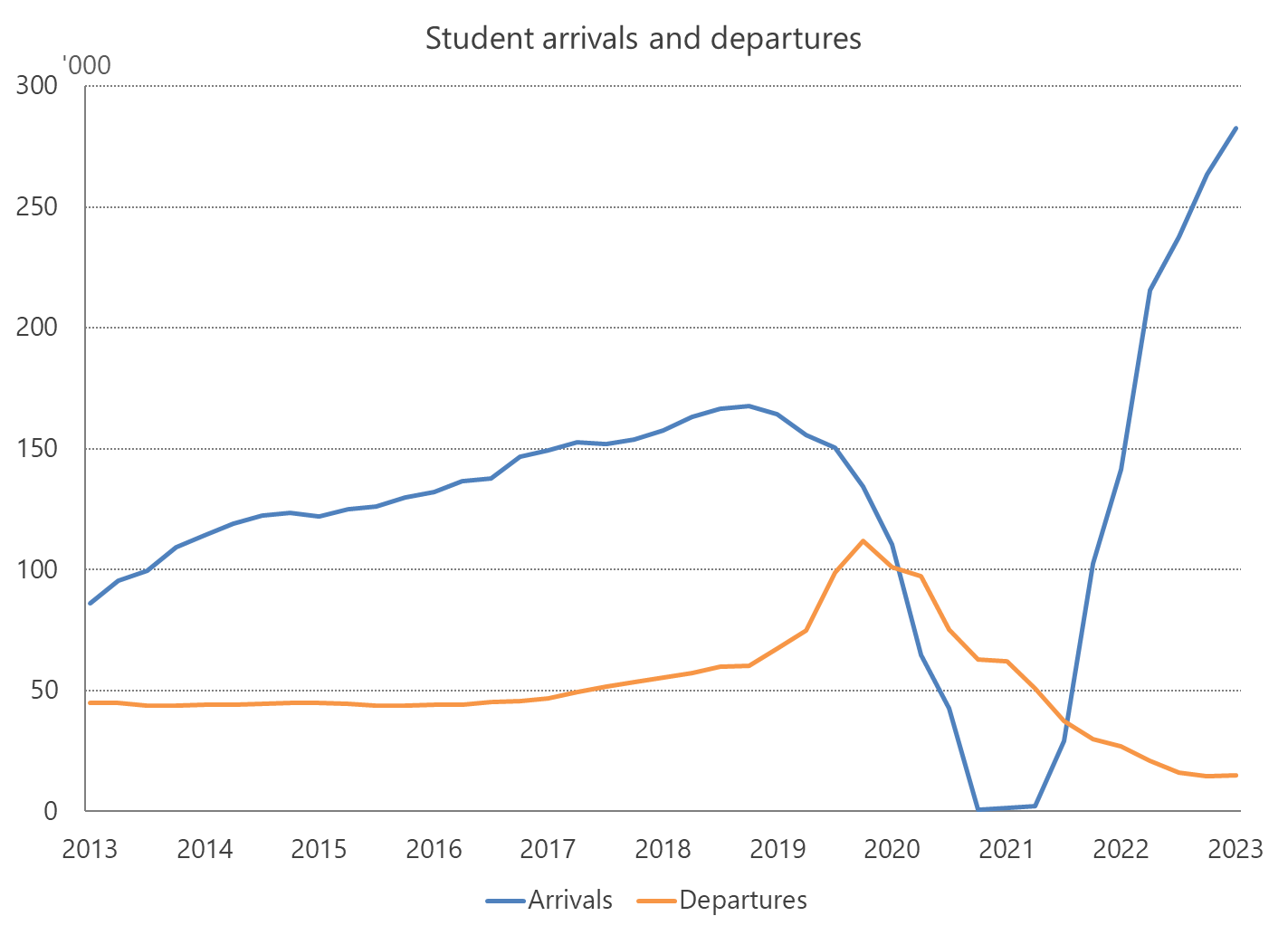Migration fearmongering helps no one

The numbers are in: in 2022-23, Australia’s population grew by 624,100 people, or around 2.4%. That’s a huge figure – a record, in fact – and it was driven by the net addition of 518,090 overseas migrants. As you might expect, the media jumped all over it:
- “Australia rockets back to 50s-style population boom” – The Australian
- “Record migrant intake to keep rents high for years to come” – SMH
Both of those takes are wrong, for one simple reason: even if the government did absolutely nothing to wind back migration, the net increase was always going to be temporary; we haven’t gone back to a 1950s-style boom, and the surge in migrants is not what is keeping rents high.
To see why they are wrong, it’s best to start with the ABS’ accompanying media release:
“Many potential migrants didn’t come to Australia in 2020 and 2021 because of border closures and other pandemic impacts. During this time temporary visa holders recorded the largest declines in arrivals. In 2022-23 the number of migrants arriving on temporary visas has gone up but the number departing has reduced slightly.”
Sometimes it helps to use a counterfactual – how might have Australia’s population have looked had the pandemic never happened? The following chart shows Australia’s annual population growth, along with a few markers to show just how big of an impact the pandemic’s border closures had on the country.

You’ll notice the dashed orange line is still below the dashed blue line – despite the recent surge, average population growth since the borders were slammed shut and then reopened is still below where it would have been had the pandemic never happened, assuming no change to Australia’s migration policy.
The next chart shows this in terms of cumulative population growth. As of June 2023, we were still about 180,000 people below where we would have been if the 10-year, pre-pandemic trend had simply continued. I’ve also extrapolated both lines out to 2027 using their linear trends, which is essentially what the media articles above are doing to reach their conclusions.

Even under the extremely unlikely scenario where the current trend of population growth continues – as mentioned earlier, the recent surge in population growth is due to the arrival of temporary migrants (e.g., students, backpackers) without the normal outflow of those people as they finished their degrees or used up their working holiday visas – we still wouldn’t reach where we would have been without the pandemic until the middle of next year. In other words, today’s housing and infrastructure may have been even more stressed in a world where the pandemic never happened!

But for all the fearmongering, a much more likely scenario is that net migration tapers off over the next year as temporary migrants start leaving the country, with Australia’s population converging to a level close to the pre-pandemic trend. We may even fall below that trend – the Australian government’s new Migration Strategy looks to make temporary migration more difficult, and with the government’s permanent migration quota currently fixed at the “pre-COVID planning level of 190,000”, there won’t be a rise in permanent migrants to offset that policy change.
Now, none of this is to say that migration is without costs (I’ve written before about how not to do migration), and Australia has long-running structural problems that can be exacerbated by migration. But journalists that ignore the facts to score clicks, stirring up unwarranted anti-migration sentiment in the process, do us all a disservice: the last thing this country needs is to provide more ammunition for certain populists to exploit in the political arena!
